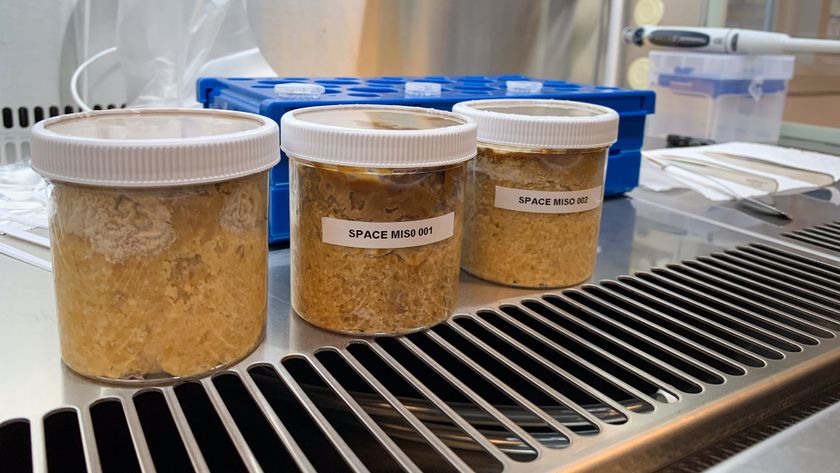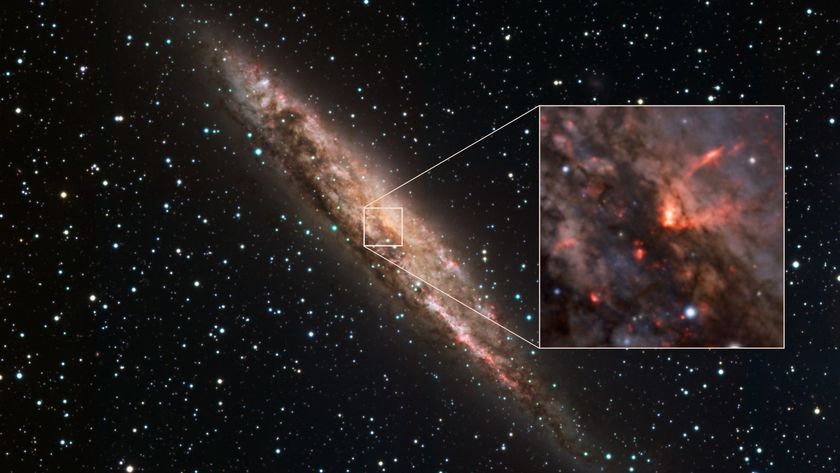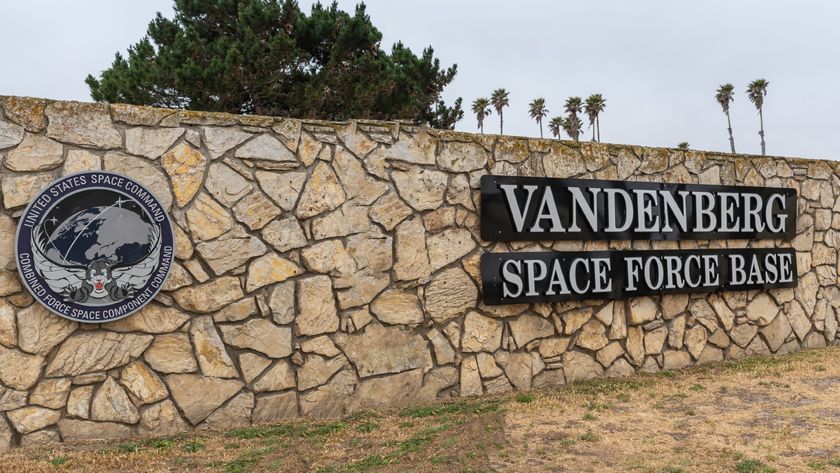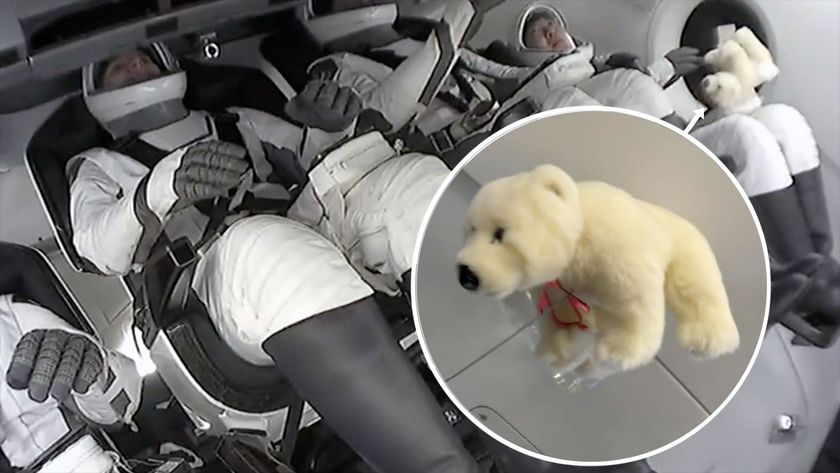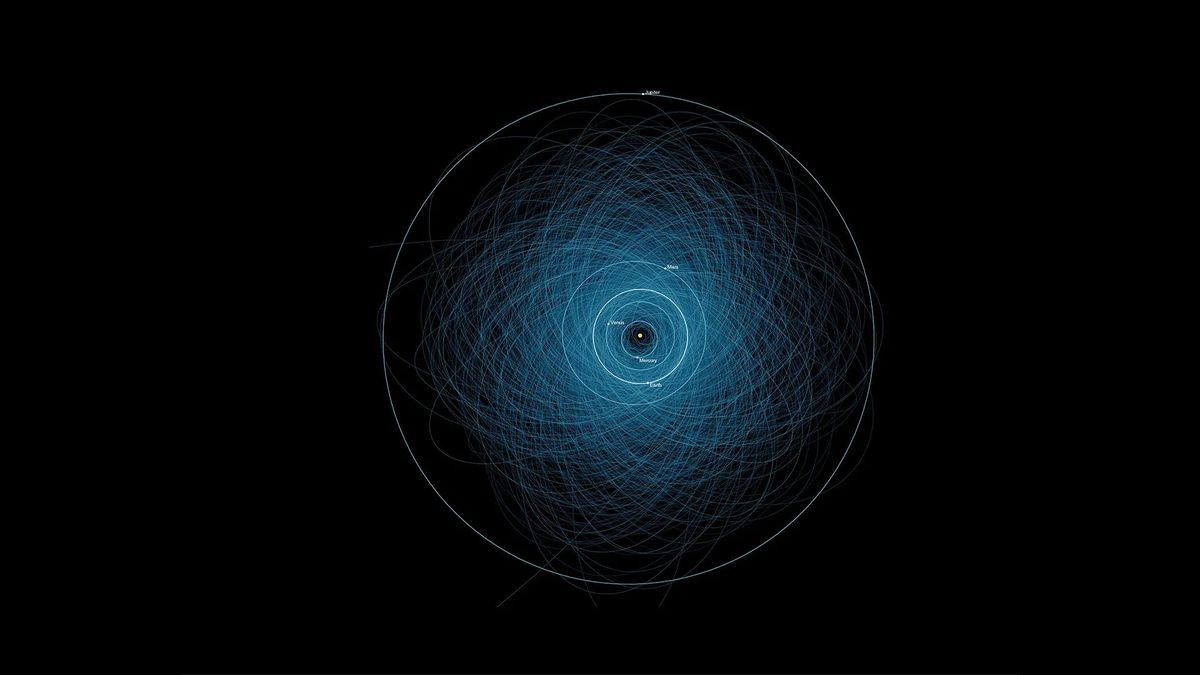
Every year, dozens of asteroids come closer to our planet than the moon is, and yet catastrophic collisions are exceedingly rare.
Now, a new study proposes that Earth has a built-in defense system — its intense gravitational forces — that it uses to tackle asteroid interlopers.
The enormous masses of planets and their moons mean they exert tremendous gravitational forces on nearby objects. The differences in gravity these objects experience, called tidal forces because astronomers used them to explain how the moon causes tides on Earth, can be so strong in some cases that the objects get ripped up ― a process called tidal disruption.
In 1994, space enthusiasts got a firsthand glimpse of the awesome power of tidal disruption when pieces of the comet Shoemaker-Levy 9, torn apart by Jupiter's tidal forces during a close encounter two years earlier, crashed into the gas giant. But for decades, astronomers couldn't find evidence that Earth and other terrestrial planets tidally disrupt passing asteroids or comets.
Related: 'Planet killer' asteroids are hiding in the sun's glare. Can we stop them in time?
Mikael Granvik, first author of the new study and a planetary scientist at Sweden's Luleå University of Technology, has long been searching for these gravitationally ripped-apart near-Earth asteroids (NEAs). "Some ten years ago we looked for families of NEAs that would have formed in such tidal disruptions, but didn't find any," Granvik told Live Science in an email. A follow-up study explained why: Any fragments formed this way would "mix with the background so quickly" that identifying a specific family is impossible, he said.
The hunt for gravitationally torn asteroids remained at a dead end untilGranvik had a flash of insight. In 2016, he helped create a model that calculated the trajectories of asteroids of different sizes to determine their numbers at different distances from the sun.
Get the Space.com Newsletter
Breaking space news, the latest updates on rocket launches, skywatching events and more!
Granvik and his colleagues compared their model's results with seven years' worth of asteroid observations collated by the Catalina Sky Survey, a NASA-funded Arizona telescope-based program that detects NEAs. But their estimates vastly underpredicted the numbers of certain asteroids ― those spotted at the distances at which Earth and Venus orbit the sun. Most of these missed asteroids were pretty small, chugging along roughly circular paths around the sun, more or less within the same plane as the orbits of Earth and Venus.
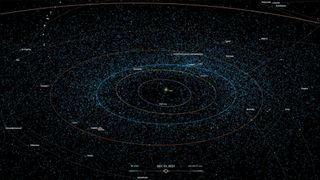
Then came Granvik's eureka moment. He realized these oddball asteroids could be tidally disrupted fragments of larger asteroids.
To check this idea, Granvik and co-author Kevin Walsh, a researcher at the Southwest Research Institute in Colorado, considered a scenario where asteroids that encountered rocky planets lost between 50% and 90% of their mass, generating streams of fragments. Now, their model correctly accounted for the previously unexplained asteroids, suggesting they had been created by tidal disruptions. They described the findings in a new study, which has been accepted for publication in The Astrophysical Journal Letters and is available on the preprint database arXiv.
"While individual families are hard to find, the combination of multiple families will produce a signature that we can identify," Granvik said. Additional simulations showed such fragments hung around a really long time, lasting an average of 9 million years before colliding with the sun or a planet or getting kicked out of the solar system.
Tidal disruption caused by Earth may help tackle asteroids, but it creates problems too, by generating more NEAs that are likely to strike our planet. Don't panic, though — because these fragments are smaller than 0.6 mile (1 kilometer) in diameter, "they don't pose an extinction-level threat," Granvik said. However, they do "increase the possibilities for Tunguska-level and Chelyabinsk-level events" — the two largest asteroid impact events in recent history.
Join our Space Forums to keep talking space on the latest missions, night sky and more! And if you have a news tip, correction or comment, let us know at: community@space.com.

Abha Jain is a freelance science writer. She did a masters degree in biology, specializing in neuroscience, from the Indian Institute of Science, Bengaluru, India, and is almost through with a bachelor's degree in archaeology from the University of Leicester, UK. She's also a self-taught space enthusiast, and so loves writing about topics in astronomy, archaeology and neuroscience.
-
George² It is preferable for humanity to invent and actually produce equipment with which it can actively and effectively protect itself from catastrophic events originating outside the planet, including asteroids. For a civilization as modern and advanced as ours currently is, to continue to rely only on the natural barriers provided by the planet is unforgivable.Reply -
Pogo This would not do much good if the asteroid is on a collision course with us, it may break apart in the last few moments, but, that will just spread out the damage footprint a bit. This only works if it’s a body that has a close encounter, then, maybe future orbits of each fragment are altered enough to miss Earth.Reply -
Questioner It seems to me it depends on the character of the object in question.Reply
If it's an aggregated rubble &/or slush pile, then yeah it will disintegrate readily,
but if it is an iron-nickle body that melted together during the chaos (friction) of planet(s) formation,
it's not going to just fracture to pieces under a little gravitational stress.
and i will add that over long time
random encounters will filter to preserve more coherennt objects over rubble piles. -
Unclear Engineer And then there is this: https://www.iflscience.com/nasa-responds-to-claims-lost-asteroid-2007-ft3-will-hit-earth-in-2024-72253 .Reply
Paraphrasing: " 2007 FT3 is a real asteroid, first observed in 2007, and is on NASA's Sentry Risk Table of objects that could potentially impact Earth. It is also a "lost" asteroid, as it was seen for just 1.2 days before disappearing from NASA's view. The 314-meter (1,030 feet) asteroid became too faint and has not been seen since. It was observed at 14 points in its arc over those two days, allowing astronomers to calculate its orbit and look for potential collisions between Earth and it. Doing so, NASA's Center for Near Earth Object Studies identified 89 potential impacts, including one on October 5, 2024. One potential point of impact, or where the asteroid was supposed to be closest to Earth, took place in 2019. But, it was not observed."
SOOOO, how good are we at finding something this size at the distances predicted? Is this evidence to support the theory of this article, or not?
And, if it did not disintegrate on the pass in 2007, it seems that NASA is not doing so well predicting its orbit. How sure are we that it won't hit us at some time not predicted?
And, of course, this can be more fodder for "The aliens are watching us." -
Questioner Per 2007 FT3,Reply
It could have been a rubble pile that got pulled apart or redirected by some other object's gravity,
although space is generally very empty.
I don't completely dismiss the possibility it was something other than an asteroid.
I was wondering what part of the EM spectrum it was sighted with and if rotation or changing position caused it to be lost from tracking.
We may find out what it is in Oct this year depending on whether it creates a huge exploding crater on the Whitehouse lawn or just some smoking grass....







